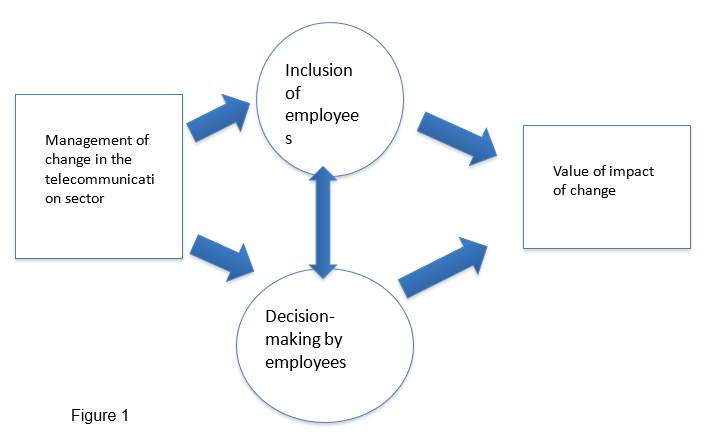Organizational change is a structured driven process that creates the roadmap for growth. The growth and development of an organization are centered on the correlation between the objectives and the processes involved (Ahmad 2000). When the need for organizational changes arises, managers must focus on its employees, which are the agents of change. The research will study the impact evaluation of the inclusion of employees in decision-making during the management of change in the telecommunication sector in the Sultanate of Oman.
The study of the management of change in the telecommunication sector will focus on the inclusion of employees and the decisions taken by the employees during change management to analyze the value of the impact of change. The decision-making process during an organizational change requires careful implementation. The management can achieve success when decisions are taken with reference to other agents of change (Armenakis, Harris & Mossholder 1993). The impact of change in an organization will influence the growth of the organization. It will strengthen its market sales and boost productivity (Armenakis & Bedeian 1999).
The positive influences of organizational change motivate most organizations to implement change (Armenakis, Harris & Mossholder 1993). Thus, the value of the impact of employee’s inclusion in the management of change in an organization is significant. The assessment of an organizational change is measured by the successful implementation (Armenakis & Bedeian 1999). Thus, the model used for this evaluation comprises the inclusion of employees, and decision-making by employees.
These concepts influence the value of the impact of change. The concepts will be analyzed in the literature review. Each of the concepts will be evaluated based on the research questions in the literature review. The analysis will be used to provide an evaluation of change management in the telecommunication sector in the Sultanate in Oman. The conceptual model in figure 1 provides a set of questions for the literature review.

The impact of an organizational change can be productive when
- The changes create positive impact on the organizational structure.
- Communication between the management and the employees is cordial.
- Employees accept, and adapt to the change in the organization without resistance.
- The change provides increases the growth index of the organization.
The employees are the primary obstacles to organizational change and they determine the extent of success or failure of the change (Amiot et al. 2006). Managers try to manage the effect of change instead of actualizing the change in the organization (Armenakis & Bedeian 1999). This is caused by the obstacles of the change. Employee’s inclusion can reduce the obstacles to organizational change (Armenakis, Harris & Mossholder 1993). The model seeks to address the impact of employee’s inclusion in the management of change. To understand this evaluation, I will investigate the variables surrounding the inclusion of employees in decision-making during organizational change.
The strategic question for the literature review will be:
- What are the feelings, attitudes, and perceptions of employees towards change?
- What are the consequences of employee inclusion in decision-making on change projects?
- How can the employees’ feelings, attitudes, and perceptions be useful in managing change in the organization?
References
Ahmad, A 2000, Organizational commitment versus organizational change: A comparative study of blue-collar and white-collar employees of saree manufacturing companies, Social Science International, Vol. 16 No 1 & 2, pp. 20-32.
Amiot, E, Terry, J, Jimmieson, L, & Callan, J 2006, A longitudinal investigation of coping processes during a merger: Implications for job satisfaction and organizational identification, Journal of Management, Vol. 32, pp. 552 – 574.
Armenakis, A & Bedeian, A 1999, Organizational change: A review of theory and research in the 1990s, Journal of Management, Vol. 25 No. 3, pp. 293-315.
Armenakis, A, Harris,G, & Mossholder, W 1993, Creating readiness for organizational change, Human Relations, Vol. 46, pp. 681-703.